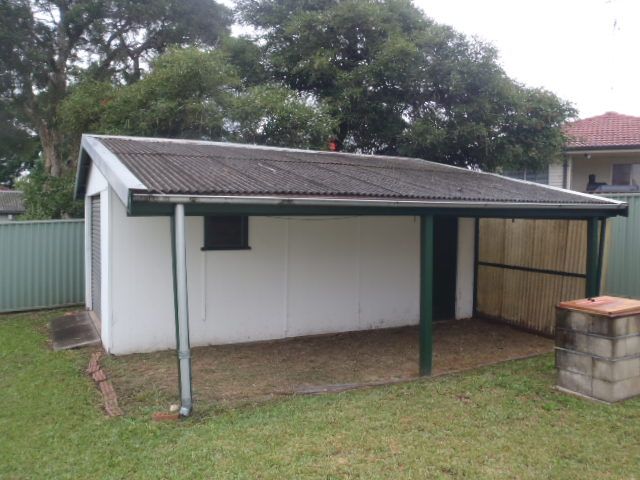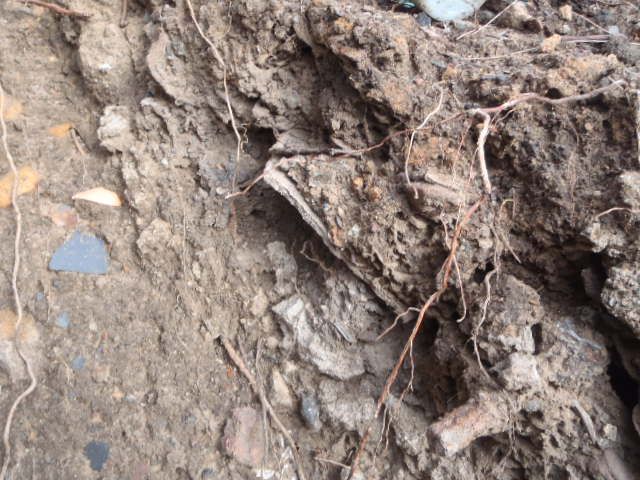

Contaminated soil with asbestos can be found throughout Sydney, Melbourne and the rest of Australia. There are two types of asbestos contamination in soil. These are bonded asbestos pieces throughout the soil, which was commonly used as landfill prior to construction of a structure, and friable asbestos fibres originating from nearby asbestos containing materials that have deteriorated and release fibres that are washed into the soil (e.g. an asbestos corrugated cement roof where water drains from the gutter onto the ground).
From the wild weather Sydney has experienced recently and the amount of rain in a short period of time from the severe storms, asbestos in soil can become more visible and exposed at the surface. With large amounts of rain in a short timeframe, the water flows over the soil and washes the top surface layer away with it. Beneath the top layer of soil can be a number of bonded asbestos cement pieces which the rain has brought to the surface. It is recommended that asbestos testing be conducted to investigate bonded fragments and loose respirable fibres that may be present in the soil.
If this occurs the short term remediation process involves an emu pick of the affected area. All collected asbestos must be disposed on in accordance with legislative guidelines. If a large number of bonded asbestos pieces are at surface level then it is best if the services of a licensed Class B asbestos removal contractor are employed. They will be able to canvas the affected area with a more thorough approach to ensure that all of the asbestos is removed and disposed of correctly.
If your contaminated soil contains friable asbestos then there is a more significant risk of being exposed to asbestos fibres. Any contaminated soil with friable asbestos must not be disturbed as the asbestos fibres can become airborne. The remediation process for this type of contamination involves a short term remedy for the contamination and a longer term remedy at the source of the contamination.
Initially the top layer of contaminated asbestos soil should be removed and disposed of as asbestos waste by a licensed asbestos removal contractor. The area is then capped with a new clean layer of soil to create a bigger barrier between the surface and contaminated soil. Secondly the source of the contamination must be fixed. This may involve complete removal of the asbestos material or encapsulation of the material to stop the release of any additional asbestos fibres (e.g. painting the asbestos cement corrugated roof).
If you are concerned about a potential area of contaminated soil qualified and experienced asbestos consultants from Safe Environments can conduct a soil investigation to determine the extent of asbestos contamination within the affected area.
Author: Stuart Lumsden

Email: info@SafeEnvironments.com.au
A Bachelor of Forensic Science in Applied Chemistry from the University of Technology, Sydney, Stuart is a Property Risk Assessor who specialises in the area of Asbestos and Hazardous Materials.

